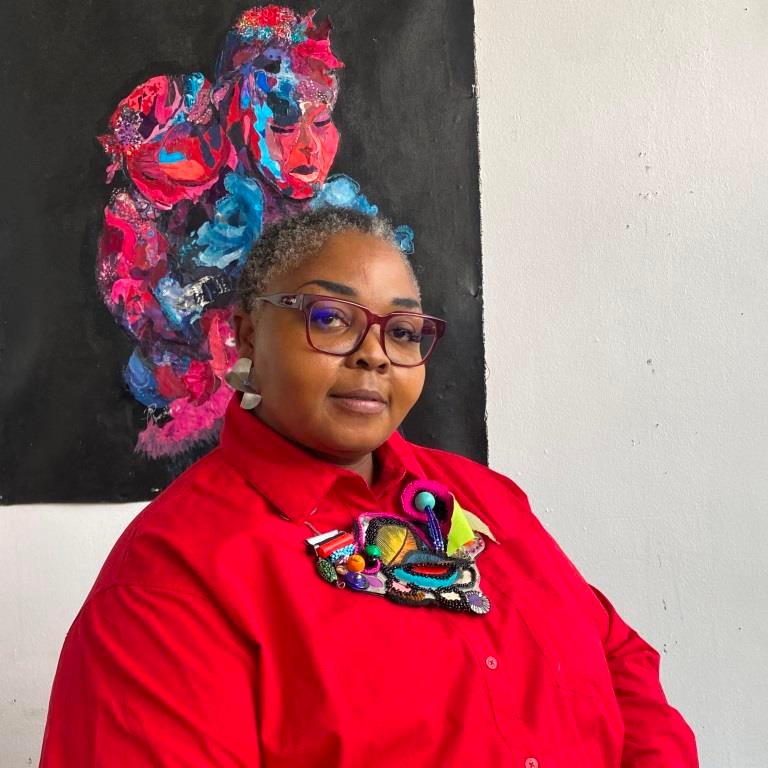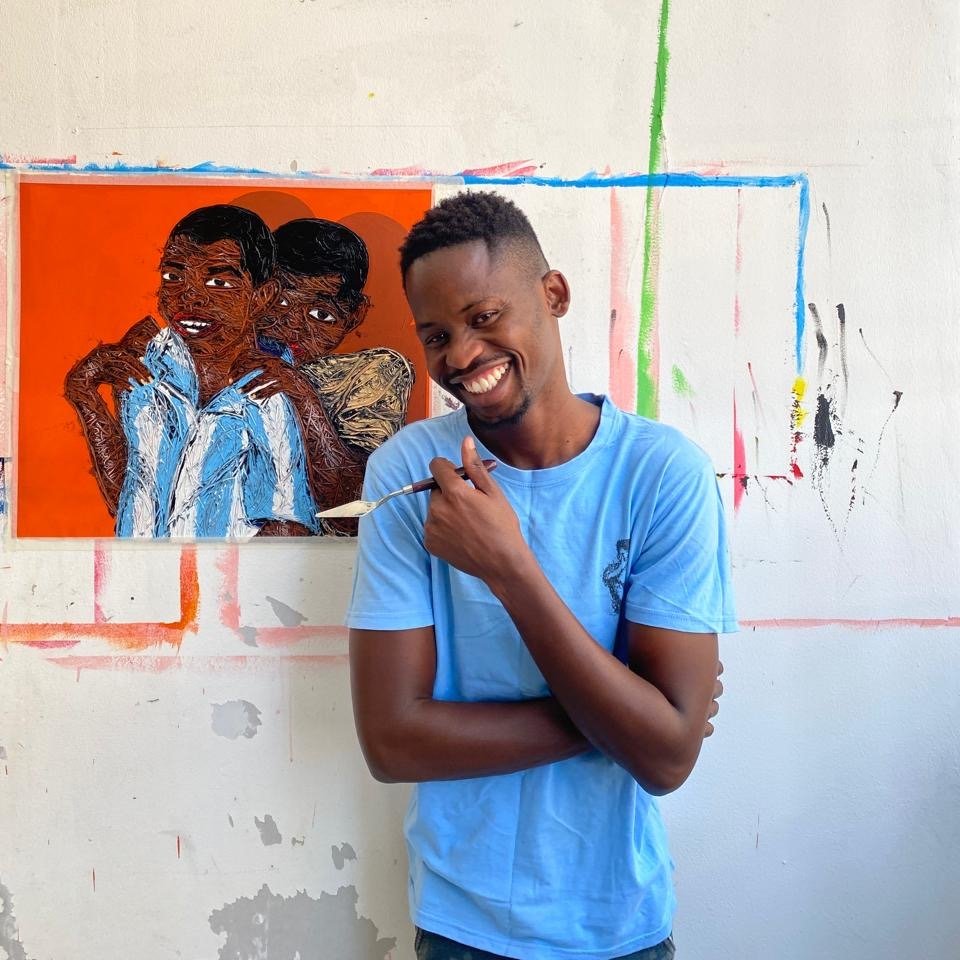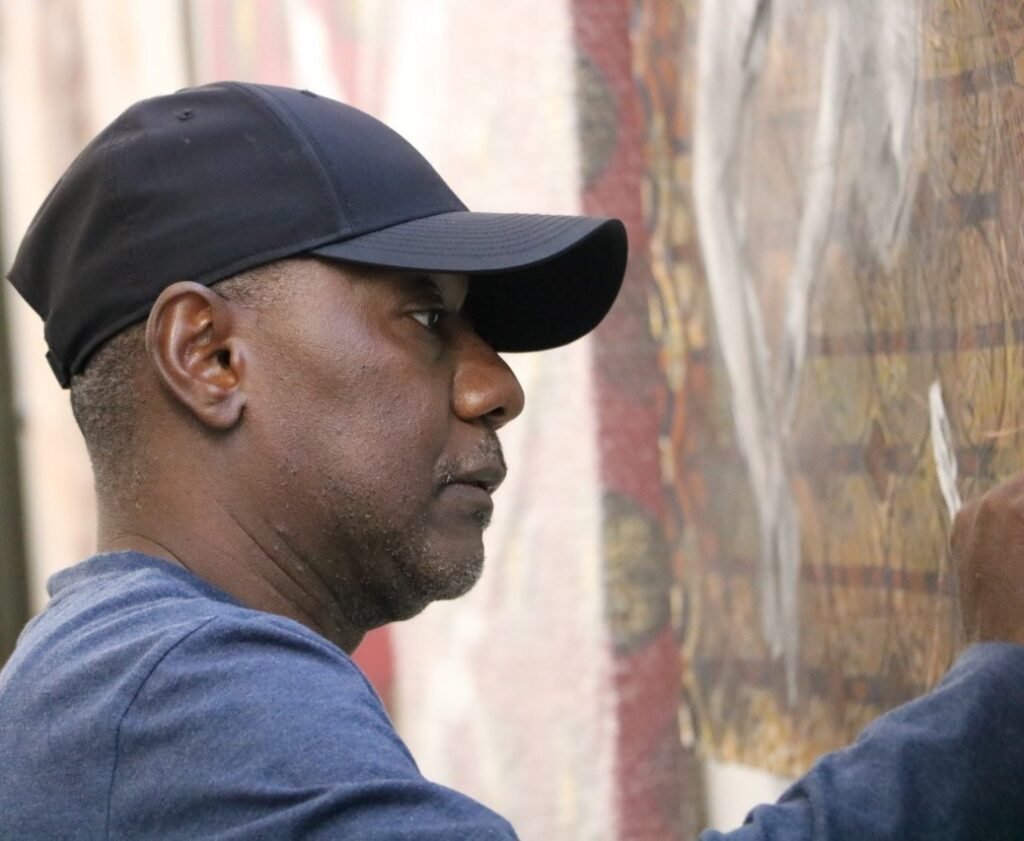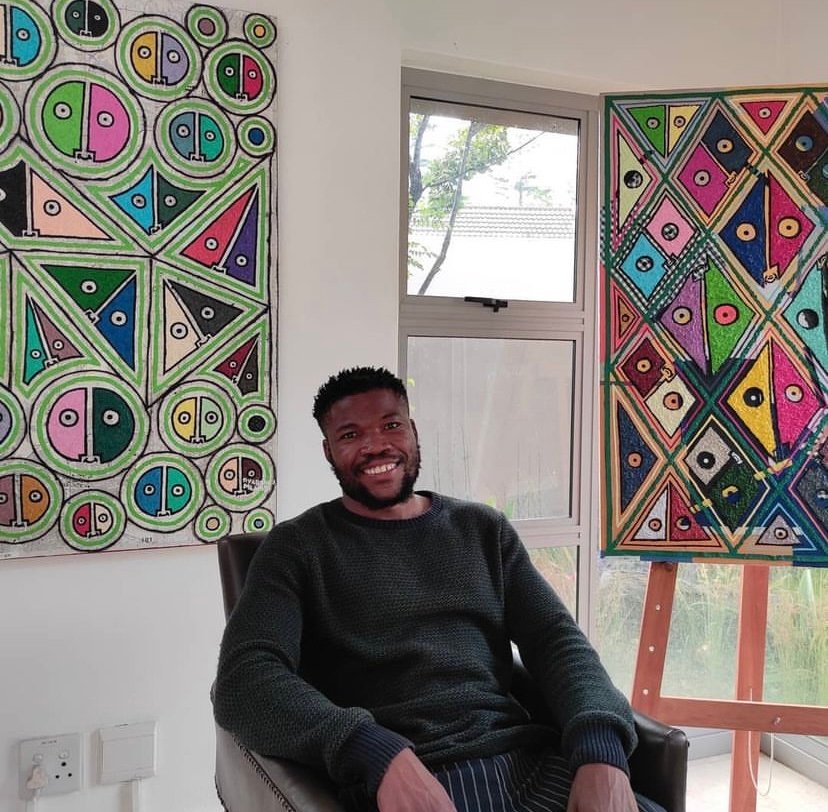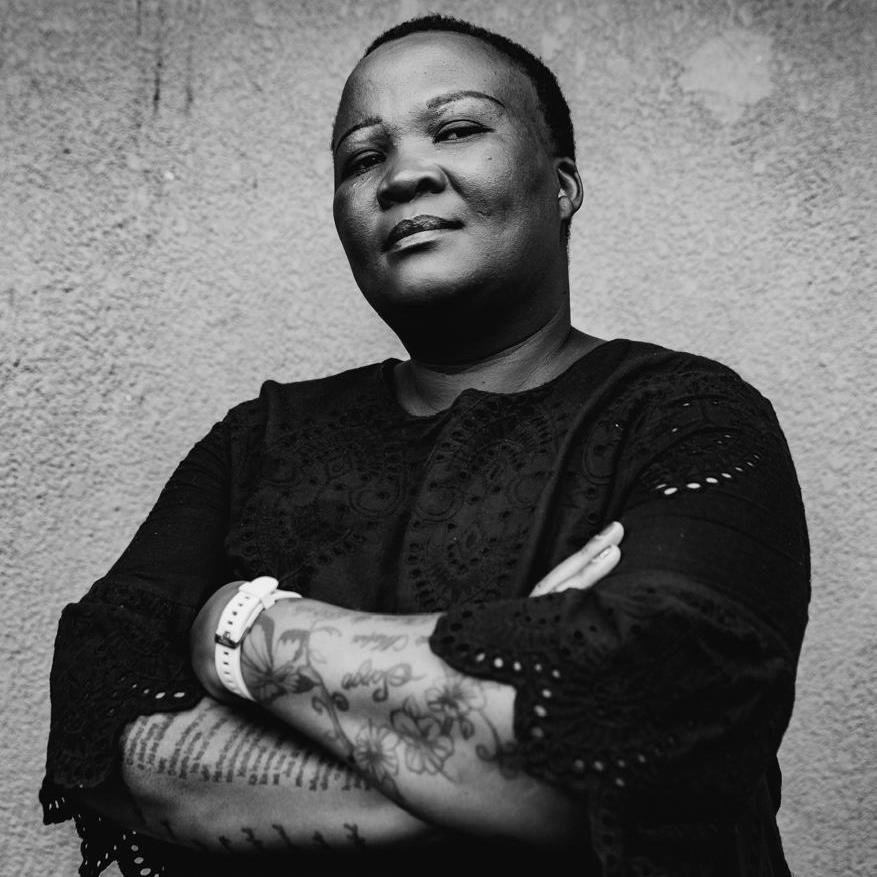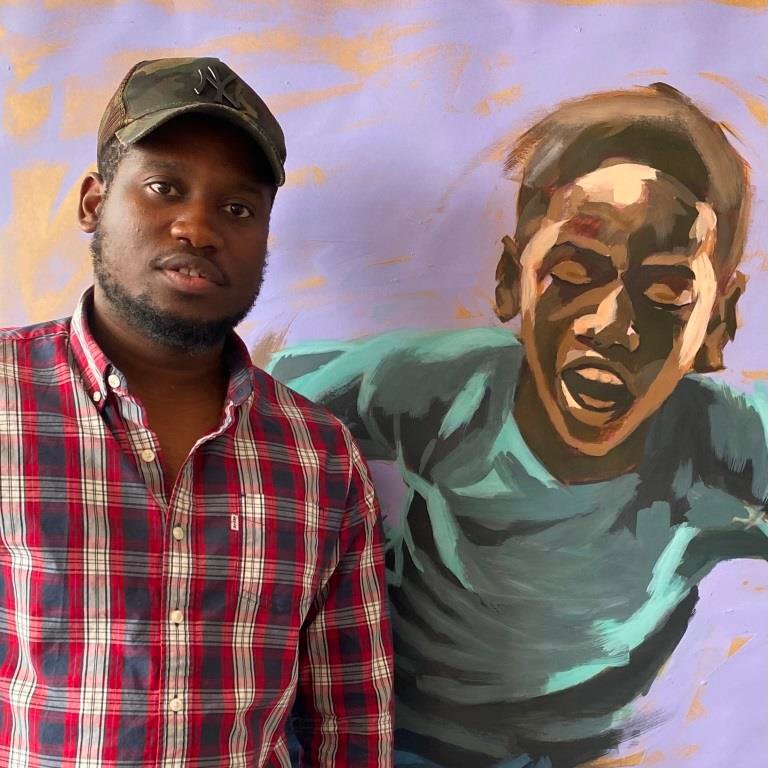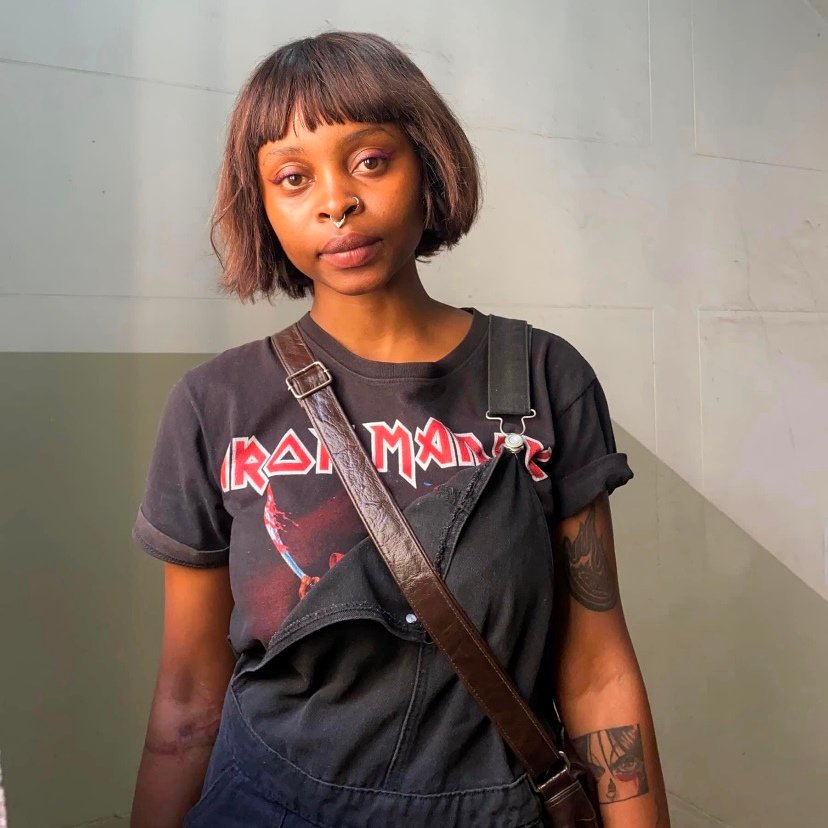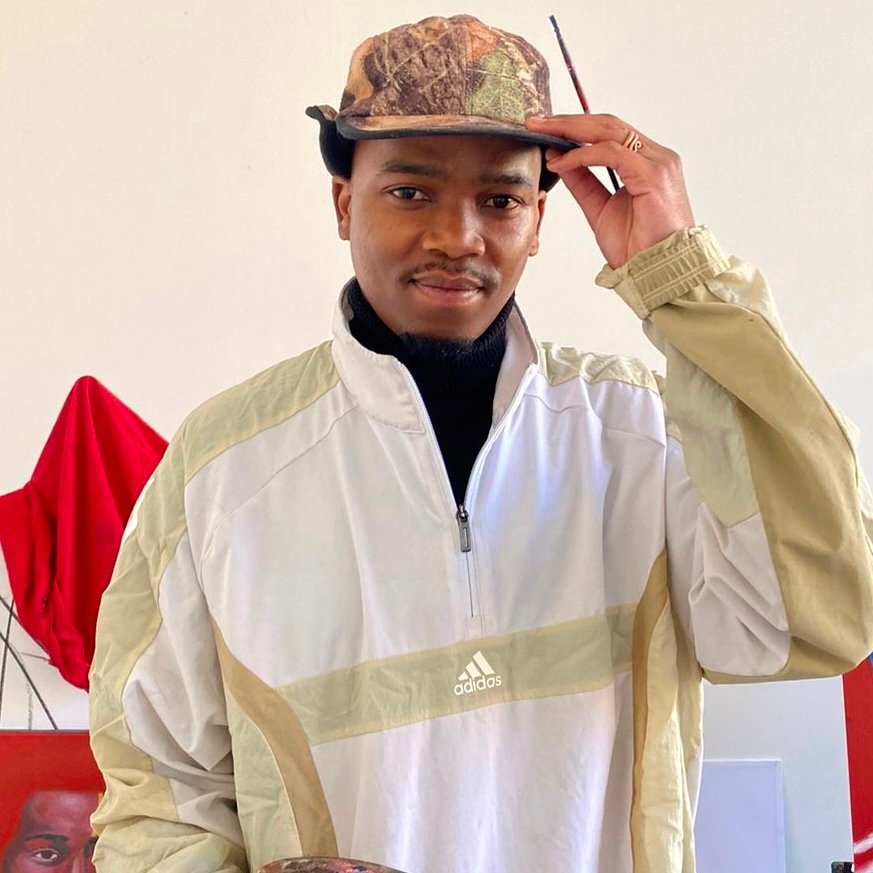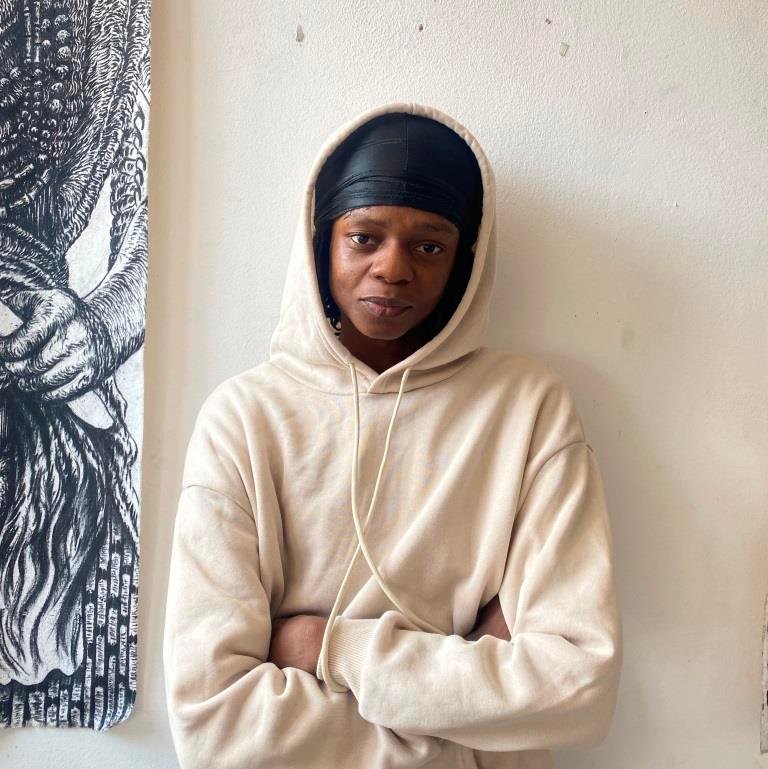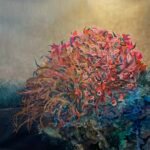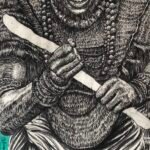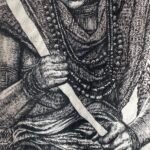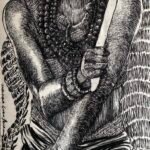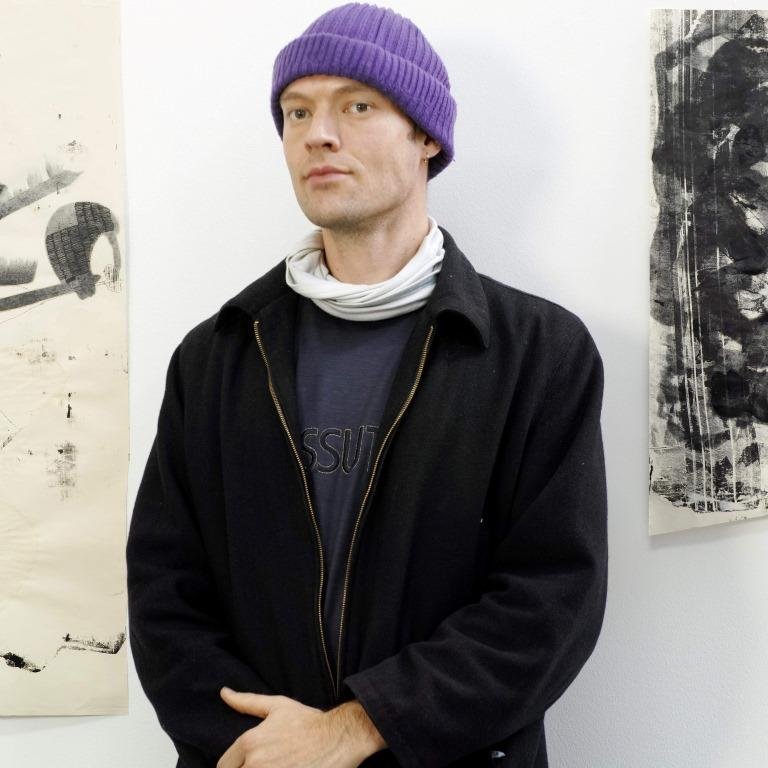
Gustav Krantz
Introduction
Gustav Krantz is a Johannesburg-based visual artist whose practice spans multiple mediums, including drawing, printmaking, sculpture, installation, and performance. Born into a family of Eastern European descent in the Western Cape and raised in Pretoria, Krantz’s identity is shaped by the intersections of their personal history, cultural influences, and the urban landscape of South Africa. As a second-generation South African, Krantz embodies a complex relationship with the country’s diverse cultural fabric, which informs their art. Their work is heavily influenced by their experiences with the excesses of the city, their fascination with discarded objects, and their keen exploration of human proximity and emotional conflict.
Krantz’s artistic approach is grounded in the idea of transformation—taking discarded materials and turning them into art, thus creating new life from the remnants of society. Their themes often delve into the tensions between body and mind, identity and perception, and the intimate nature of human interactions. Over the last few years, Krantz has drawn inspiration from a range of artists, including Felix González-Torres, Tracey Rose, and Mary Sibande, and from their own observations of life in Johannesburg. Their work reflects a deep engagement with the complexity of human existence and the relationships that define it, all while maintaining a sense of creative freedom that allows them to explore experimental forms.
Early Life and Initial Exposure to Art
Krantz’s journey as an artist began in an unexpected way. As a child, growing up in Stellenbosch, they were surrounded by encyclopaedias and books that their mother had collected, but they never quite connected with reading. They would flip through the pages, but it wasn’t until they came across the images within the encyclopaedias that they began to feel a sense of engagement. These pictures captured their attention and became a form of communication that transcended the limitations of language. Krantz’s early exposure to art was thus rooted in visual imagery, where their fascination with pictures blossomed into a lifelong passion for art.
At the age of 8 or 9, Krantz had a formative experience when they attended an art class outside their school in Stellenbosch. The class, which took place once a week, offered a variety of hands-on activities such as papier-mâché and finger painting. For Krantz, this experience was transformative—it was the first time they felt a true sense of enjoyment in the creative process, more so than what they were experiencing at school or at home. The simple act of creating something with their hands ignited a sense of freedom and self-expression that they had not encountered before. This early exposure to art marked the beginning of their artistic journey, laying the foundation for their future work as a professional artist.
Influences: A Fusion of Personal History and Contemporary South African Art
Krantz’s influences are as varied as his practice, drawing on both global and local artistic traditions. Over the past few years, he has been particularly influenced by artists like Felix González-Torres, Tracey Rose, and Mary Sibande. González-Torres’ work, known for its conceptual depth and emotional resonance, has inspired Krantz to think about the intersection of memory, absence, and presence within their own practice. Rose, whose work cuts across performance, installation, video, and drawing, has inspired Krantz with her ability to create emotionally charged, multifaceted artworks that provoke deep reflection on the complexities of identity and society. Similarly, Sibande’s work, which explores the legacy of African womanhood and the intersection of race, class, and gender, has resonated with Krantz’s own exploration of identity in their art.
Krantz also cites Clive van den Berg as an artist with whom he has a particular soft spot. Van den Berg’s work, often imbued with a sense of spiritual and cultural urgency, connects with Krantz’s own desire to explore the intersections of culture, identity, and memory. The shared focus on representation and social commentary makes Krantz’s relationship with van den Berg’s work particularly significant.
One of Krantz’s closest artistic allies is Tamzyn Limb, a fellow artist who runs the Brixton Light Festival. Limb’s work has had a profound influence on Krantz, especially with her experimental approach to installation art. Krantz admires Limb’s ability to weave creativity into immersive, site-specific installations that engage directly with the urban environment. Limb’s recent trip to Dakar, where she spent two weeks collecting materials from the streets to create an installation, reinforced Krantz’s own belief in the power of walking through cities and finding meaning in the discarded objects of daily life. This practice of “picking up things” from the streets and transforming them into art has become central to Krantz’s own work.
Krantz’s practice, like Limb’s, engages directly with the world around them, finding inspiration in the discarded and the overlooked. Their recent works explore this process of transformation—taking “thrown away” materials and recontextualizing them in a way that reflects the excesses of contemporary life. Whether through their prints, drawings, sculptures, or installations, Krantz continually challenges the boundaries between art and everyday life.
Thematic Concerns: Proximity, Transformation, and the Body
At the heart of Krantz’s practice is the idea of proximity. Their work often explores the tension between the intimate and the distant, the micro and the macro, and the physical and the psychological. For Krantz, proximity is not just about physical closeness but also emotional and psychological distance. Their recent works examine how bodies are both trapped in their own experiences and yet able to break free through creative expression.
Krantz’s exploration of the body as a site of tension and transformation is closely tied to their interest in emotional conflict. Drawing on themes of intimacy and possessiveness, Krantz’s recent work reflects their internal struggle with how to navigate relationships and emotions. This theme is also reflected in a book that Krantz recently read, Simple Pleasures, by Annie Ernaux a love story about internal conflict and the desire to deeply engage with another person. The book explores questions of possessiveness, intimacy, and the boundaries that exist in human relationships. Krantz identifies with this narrative, seeing it as a reflection of their own feelings as an artist trying to navigate their personal and professional relationships with the world.
For Krantz, the idea of “trapped in a body” is not merely a physical state but an existential one. Their work grapples with the extremes of human experience—how we engage with our own bodies, how we engage with others, and how we navigate the tension between wanting to be close and needing distance. In their installations and sculptures, Krantz seeks to break down the boundaries of the self, using materials that are often in a state of transformation. By repurposing discarded objects and materials, they challenge the idea that something that has been discarded has no value. For Krantz, everything has the potential to be redefined, just as the body, mind, and spirit are constantly in flux.
The Urban Landscape as a Source of Inspiration
A significant part of Krantz’s artistic process involves wandering the streets of Johannesburg, collecting discarded materials, and transforming these found objects into new works of art. Their fascination with excess—the things that are thrown away or deemed useless—drives much of their work. The streets of Johannesburg are full of discarded items, remnants of daily life, and Krantz finds inspiration in these objects. Whether it’s scraps of metal, broken wood, or old fabrics, Krantz sees these materials as potential carriers of meaning, waiting to be reimagined.
Their exploration of these “throwaway” materials connects with the Italian art movement Arte Povera, which sought to elevate the humble and the overlooked by using found and natural materials. Krantz’s own approach is similarly informed by this philosophy. They are drawn to the idea of repurposing things that have been discarded, whether physically or symbolically, and transforming them into something that has new meaning. In doing so, Krantz’s work invites the viewer to reconsider what is valuable and what is not, asking profound questions about consumption, waste, and the impermanence of material goods.
The act of walking through Johannesburg and picking up discarded objects has become a central part of Krantz’s creative process. They use these materials to create works that explore the relationship between the body and the environment. Their installations, sculptures, and prints are often made from materials that are found and repurposed, bringing a new life to objects that would otherwise be thrown away. In this way, Krantz’s art is a direct response to the excesses of the city, and they use these materials to confront the complexities of urban life and its effects on individuals and communities.
The Future: Embracing Cycles of Change
Looking ahead, Gustav Krantz is optimistic about the future of their art and the role of art in society. They acknowledge the cycles of cynicism that often arise in contemporary culture but believes that art is one of the few tools that can sustain and inspire individuals during such times. Krantz is deeply committed to their practice and feels that the tools of art—creativity, transformation, and expression—are more relevant and necessary than ever. He sees these tools as not only personal means of survival but also as ways to engage with larger social and cultural issues.
As an artist, Krantz is excited about the possibilities of continuing to explore the intersections of identity, materiality, and human experience. He envisions a future where his work continues to engage with the urban environment, where discarded materials are elevated to new forms of art, and where he can explore new ways of creating meaning through the act of making. For Krantz, the future is full of potential, driven by the belief that art is a powerful tool for navigating and making sense of the complexities of the world around us.
On Auction
-
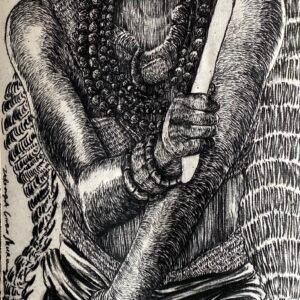 Strong kids mother gave birth to 12Auction Expired
Strong kids mother gave birth to 12Auction Expired -
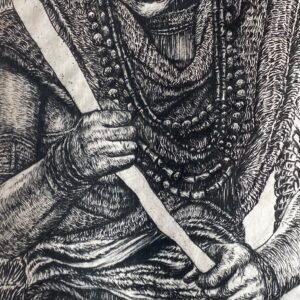 Story kids mother gave birth to 10Auction Expired
Story kids mother gave birth to 10Auction Expired -
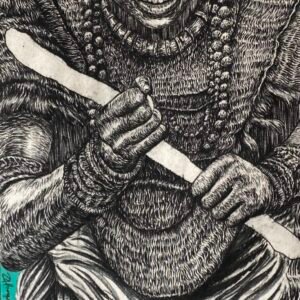 Strong kids mother gave birth to 9Auction Expired
Strong kids mother gave birth to 9Auction Expired -
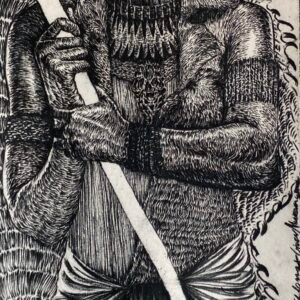 Strong kids mother gave birth to 11Auction Expired
Strong kids mother gave birth to 11Auction Expired

